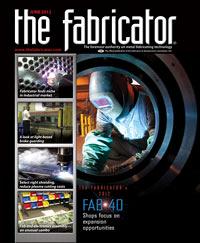Senior Editor
- FMA
- The Fabricator
- FABTECH
- Canadian Metalworking
Categories
- Additive Manufacturing
- Aluminum Welding
- Arc Welding
- Assembly and Joining
- Automation and Robotics
- Bending and Forming
- Consumables
- Cutting and Weld Prep
- Electric Vehicles
- En Español
- Finishing
- Hydroforming
- Laser Cutting
- Laser Welding
- Machining
- Manufacturing Software
- Materials Handling
- Metals/Materials
- Oxyfuel Cutting
- Plasma Cutting
- Power Tools
- Punching and Other Holemaking
- Roll Forming
- Safety
- Sawing
- Shearing
- Shop Management
- Testing and Measuring
- Tube and Pipe Fabrication
- Tube and Pipe Production
- Waterjet Cutting
Industry Directory
Webcasts
Podcasts
FAB 40
Advertise
Subscribe
Account Login
Search
Being big, acting small
Minnesota fabricator successfully scales up high-product-mix manufacturing
- By Tim Heston
- June 13, 2012
- Article
- Shop Management

Figure 1: One of the country’s largest contract fabricators, BTD touts itself as a one-stop shop, offering everything from midvolume production stamping to precision laser cutting, bending, tube bending, heavy fabrication, and assembly.
When Bill Clinton’s first presidential campaign kept plugging the mantra “It’s the economy, stupid,” contract stamper and metal fabricator BTD had 35 employees. By 1994 it more than doubled its head count. In the 2000s came a series of acquisitions: a machining company, a tool- and diemaker, a heavy-fabrication specialist. Now the company employs 890 and is utterly different from when Clinton’s sound bite first hit the political airwaves.
All this reads like a classic business success story that falls flat thanks to culture clashes and organizational mishaps. The machining business isn’t the stamping business; which isn’t the heavy fabrication business; which isn’t thin-gauge, precision fabrication. Then there’s the tool and die world, which goes back to BTD’s roots in Bismarck, N.D. The name comes from Bismarck Tool & Die, a garage shop two friends launched in 1979.
But the company narrative hasn’t fallen flat. Managers expect the firm to grow another 18 percent this year. That’s not small potatoes for one of the country’s largest contract metal fabricators and medium-volume (that is, nonautomotive) stampers. Last year alone it earned $150 million.
Accomplishing such growth isn’t easy for such a large fabricator. BTD staffers answer several hundred request for quotes (RFQs) a week, win about 15 percent of them, and decide how to route and schedule those disparate jobs among the company’s four plants—one in Detroit Lakes, in northwest Minnesota; two locations in Lakeville, a southern Minneapolis suburb; and another in Washington, Ill. The company also has a distribution facility in Otsego, between Minneapolis and St. Cloud. Every day hundreds of employees work with thousands of product numbers and infinitely variable customer demands.
Company President Paul Gintner attributes the success in part to founders with good foresight, in part to improvement measures based on good data, and in part to a focus on responding to customer needs.
In essence, this big fabricator acts small.
Founder Foresight
Without Winnebago, there probably wouldn’t be a BTD. Erling Rasmussen and Paul White Jr. met working as tool- and diemakers at Winnebago’s Forest City, Iowa, plant. Rasmussen then took a job at Bobcat in Bismarck, N.D., where he found that he kept outsourcing tooling work to shops in Minnesota. Bismarck simply didn’t have tool and die companies that could meet Bobcat’s needs. But what if it did?
That question led Rasmussen and White to launch Bismarck Tool & Die in 1979. Soon after the launch, though, the two knew that to make a go of it, they had to move where most customers were, and at that time most of them happened to be in eastern North Dakota and western Minnesota. So the next year they moved the shop to Detroit Lakes.
During the early 1980s the two founders and about a half dozen employees had to deal with the highly cyclical tool and die arena. “They soon found that the business cycled very hard,” said Gintner. “They would work 70 hours one week and then 32 the next.”
More customers began to ask not only for tools, but also for stamped parts. So in 1986 they launched a new business, MN-Kota Stamping, and by 1991 it merged with Bismarck Tool & Die. Starting then the business became known as BTD Manufacturing.
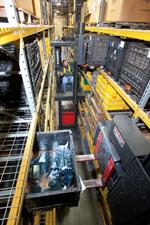
Figure 2: BTD holds a controlled amount of finished-goods inventory, so customers need not pull parts until they need them.
By the early ’90s the business was on a tear. In 1992 the contract manufacturer had 35 employees; two years later it employed 80 people. At this point, though, Rasmussen and White made an unusual decision. “They quickly realized that there was enormous growth potential in front of them, and this was concerning,” Gintner explained. “They thought, ‘If this really happens, we’re both going to be in trouble, because neither one of us could buy the other out. We need an exit plan so this business can survive beyond us.’”
They were only in their mid-40s, in their working prime. So when Otter Tail Corp. made an offer in 1995, they didn’t simply take the money and run. Instead, they signed an agreement in which they would earn out of the business over the next several years. In 1999 White retired, and in 2004 so did Rasmussen, but by this point the two had shepherded the business through a serious transformation, from a relatively small fabrication and stamping shop to a major metal manufacturing player.
Acquisition and Growth
Acquiring BTD, Otter Tail was diversifying. Otter Tail’s origins go back to its electrical utility, which had limited growth potential because it provided power to a rural area. So to drive growth, Otter Tail’s investors formed a holding company and acquired businesses that included various manufacturing organizations, from PVC pipemakers and thermoformed plastics companies to metal manufacturers like BTD.
The late 1990s served as a kind of runway for BTD; business was getting ready to truly take off. In 1995 the company employed 104. By 2000 head count had tripled, and soon the fabricator’s acquisition spree began in earnest. In 2002 the organization merged with an Otter Tail sister company, Precision Machine, which enhanced BTD’s machining capabilities. In 2005 it purchased Performance Tool & Die, a company that specialized in progressive dies. And in 2007 the fabricator bought Pro Engineering, a small Minneapolis stamping company.
The next year came Miller Welding & Iron Works, a specialist in heavy fabrication. “We were looking for a company that would give us new expertise in the metals industry,” Gintner said. “[Miller] made products like 6,000-pound fracking pumps and large fabrications for OEMs like Caterpillar and Komatsu. Our business model was around relatively high-volume stamping, and light to medium fabrication. Miller started at medium fabrication and went up to much larger fabrications. Most products in that plant [in Washington, Ill.] are moved by cranes.”
By 2008 the company employed more than 600 and could offer a staggering portfolio of metal manufacturing services, from machining and tool and die work to heavy fabrication, low-volume precision fabrication, tube fabrication, prototypes, and production stamping.
Its equipment list doesn’t fit on a single sheet of paper. It’s an eight-page booklet, all small type and no photos—just line after line of machinery: assembly equipment, paint booths, blasting equipment; a tooling department full of equipment like vertical machining centers and electrical discharge machining systems; five sheet metal cutting lasers, including one 5-kW system with a material handling tower; three tube cutting lasers; two punch presses; 17 press brakes; four plate rolls; five tube benders; seven robotic welding systems; wet paint and powder coat lines; and more. The list is extensive, its mix unusual. Few fabricators can tout having rows of blanking and forming presses as well as 20 weld positioners, some of which can handle workpieces up to 20,000 pounds (see Figure 1).
Part volumes run the gamut. Large fabrications often can be one-off products like immense lifting devices for plants that make wind tower blades. At the other end of the spectrum, the company stamps hundreds of thousands of parts a year for companies like Polaris.
BTD hasn’t been immune to economic swings. In 2009 business plummeted by 40 percent and the workforce was reduced by 15 percent, to about 490. Still, just two years later, head count has nearly doubled—quite a comeback from the Great Recession. This wasn’t the “U-shaped,” gradual recovery the larger economy experienced. “We quickly ran into a problem in 2011,” Gintner said. “We were having a hard time hiring enough people.”
The comeback story rests on a relatively dry but critical subject: real-time data.
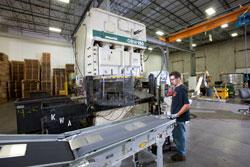
Figure 3: Personnel concentrate on reducing work-in-process. Parts move efficiently from one process to the next.
How Data Drives Everything
In a high-volume, low-mix operation, a limited number of products travel down a manufacturing line with work centers that are intimately linked. The routing is the same, time after time. This isn’t the case for contract manufacturing, and scaling up such high-mix work to an operation as big as BTD’s isn’t easy. This, sources said, is why real-time data collection is so important.
“Being a contract manufacturer, when you get to the end of the month and you roll up your financials, there are millions of transactions that happen inside the month. To find a finance problem or a margin problem, you have to find it on the floor,” Gintner said, adding that to do this requires real-time data collection “to understand what’s happening right this moment, so we can actually correct it at this moment. In effect, we’re margin-scrutinizing our parts as they run.”
This is why rugged laptops dot BTD’s shop floors. Workers also carry mobile, touch-sensitive devices (from RF Smart, www.rfsmart.com) and periodically make a few swipes with their finger or clicks of the mouse. They’re recording current production data, including cycle times.
All this has built up a companywide database that helps managers schedule work and determine machine workloads. If a machine can run 1,000 cycles per hour without stopping, the company may set a target of 850 cycles; that’s 85 percent green-light-on time. But what if during one hour the press runs only 400 cycles? The operator records this data, including a lost-time log that describes what got in the operator’s way and what didn’t work. This data transmits directly to the companywide enterprise software.
As Gintner explained, “We Pareto those results, which give us the big nuggets to find. Maybe it’s a material handling, coil handling, or other, larger problems.
“We can do a lot of lean manufacturing activity on a specific part,” he continued, “and our operators and supervisors are looking for those nuggets all the time. But we want to find the bigger issues, and in order for us to do that, we need to connect the operations.” Real-time data collection, he said, helps the company do just that.
To help drive such improvement efforts, the company brought in Stanley Stafford, a consultant with Dallas, Texas-based DeWolff, Boberg & Associates (www.dewolffboberg.com). Starting in late 2008, Stafford focused improvement efforts on the front-line management. “We helped develop a skill set as a front-line supervisor and manager to really increase the capacity of the organization to handle all the additional growth, volume, and work complexity,” Stafford said.
This also involved perfecting quick changeover and the concept of single-minute exchange of dies (SMED). “They continually work to drive that changeover time to a minimum,” Stafford said. “But as new products come in, everyone started to look at it not only from a design standpoint, but also from an execution standpoint. If you design these processes with [quick changeover] in mind, it will inherently speed the entire process.”
Rebranding
By 2008 the company touted three brands: BTD Manufacturing, a stamping and light to medium fabrications company; Performance Tool & Die, which represented the company’s tooling group; and then the Miller Welding group for those large, heavy fabrications.
“We all had distinct reasons why we thought we wanted to keep the brands,” Gintner said. “But we began to see that over time, when we visited customers like Caterpillar or Polaris or Toro, and you had to start selling the whole [BTD] service package, we began to play the business card game, and we had to decide who would do what.”
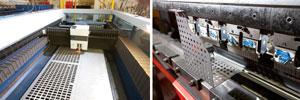
Figure 4: Most laser cutting at BTD occurs in its Lakeville plant, but the parts may be bent 200 miles away at the Detroit Lakes plant, which is closer to many customers. Unlike formed parts, flat parts stack easily, so bending parts closer to customer plants saves shipping costs.
Customers also said they wanted to see standardizations in systems and processes across the organization. This is why today the company follows a centralized model, with a core management team overseeing all of BTD’s operations. As for branding, all business cards now say, simply, BTD.
Managers chose this route because they wanted to use BTD’s diverse capabilities as a competitive advantage, not as a liability. “People used to ask us, ‘How can you be good at everything?’ That’s because of many specific talents in our different plants. When you give us a product, we can figure out which plant is best and which talents can produce this product the best,” Gintner said.
Managers want customers to consider BTD as a one-stop shop, but not as a jack-of-all-trades and master of none. Instead, BTD employs jacks-of-specific-trades who work in efficient collaboration.
The sales structure exemplifies this concept. Years ago, as part of a smaller company, sales executives worked with prospects and quoted orders on their own. Today the offerings are just too diverse. So now each sales account manager has more than a dozen support personnel in the estimating department, including specialists in tube fabrication, stamping, heavy fabrication, tool and die, quality, and other services. The support personnel work with account representatives to analyze potential orders and generate quotes.
To handle such a high number of RFQs (again, several hundred a week), the estimating system has gradually become more automated, drawing from a larger and larger database of past work. The company uses an estimating system that’s built into the company’s customer relationship management (CRM) software, which in turn integrates with the organizationwide ERP platform. So when RFQs arrive, they automatically get sent to the estimating people with the right expertise.
Coordinated Scheduling
No matter what kind of project comes in the door, the sales and estimating groups collaborate closely to analyze work center loads across the entire organization. “We look out about 16 weeks,” Gintner said. “And each location, whether it’s in Minnesota or Illinois, by department and work center we watch the load. And we ensure we have enough people and machine time based on the jobs coming into the system.”
Say a project involves a large plate fabrication that includes some precision tube bending. Once this job enters the ERP system (Microsoft’s Dynamics AX), it is assigned to the heavy fabrication plant in Illinois. Simultaneously, the software detects that the assembly requires some bent tubing components, so it automatically orders that tubing from the company’s plant in Minnesota. Similarly, if an order for a new stamping comes in that requires new dies, the tooling group immediately receives an order for a tool that must be complete by a certain date so the stamping department can produce parts.
Centralized Management
BTD uses a centralized management model to make this all work. Each plant isn’t run by what Gintner calls the “GM [general manager] model” in which each factory runs more or less independently. Instead, a core management team oversees operations in all plants to ensure identical systems are in place. Yes, specific procedures differ with the manufacturing technology, but top-level policies like inline inspection and other quality standards run across all operations.
“We must have the same systems in place, so that when our customers show up at a plant either in Illinois or Minnesota, they feel like it’s the same organization, with the same processes and same way of looking at products on the floor,” Gintner said.
Inventory and the Contract Manufacturer
These days OEMs shun inventory, and this effectively has pushed inventory to the supplier base. Lead-times are so short now, many fabricators have no choice but to manage some amount of finished-goods inventory, and BTD is no exception (see Figure 2). Design changes do occur, but customers usually notify BTD of such alterations in advance and phase in those changes over time. So unless a part must be changed immediately to, for instance, fix a safety problem with the OEM’s product, almost none of the fabricator’s finished-goods inventory becomes obsolete.
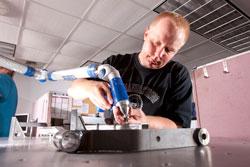
Figure 5: A technician performs a quality check on a part. BTD recently initiated its “Speed 2 Line” program in which new part runs are qualified in about 30 days, depending on the job type, volume, and part complexity.
“We inventory in all three locations in Minnesota along with our plant in Illinois. We give customers options,” Gintner said. “Where would you want to pull [your parts], based on where your trucks’ logistics routes are?”
The company builds to customer forecasts, and those customers pull from BTD warehouses. BTD turns over its finished-goods inventory about every 30 days, though this may vary depending on the product mix. Regardless of how often customers pull parts, they never retrieve them until right before they’re needed.
OEMs may shun a large parts inventory, but as a contract manufacturer BTD shuns work-in-proc-ess (see Figure 3). “The place we disdain inventory the most is in WIP,” Gintner said. “We need to get piece parts from the flat profile, to a formed component, and to the welding area as quickly as possible.” Unlike finished goods, WIP can’t be sold except to the scrapyard.
Personnel have this in mind when scheduling jobs and determining part routings, some of which look rather unusual, at least on paper. For instance, most high-production lasers are in Lakeville, while most of its high-end press brakes are northwest in Detroit Lakes. Parts are cut on the laser, kitted to a certain quantity per each order, then trucked 200 miles to Detroit Lakes, where they are formed and finished, warehoused, and made ready for the customer (see Figure 4).
At first glance the practice seems a bit counterintuitive: Why not cut and bend parts at the same plant? The reason: Detroit Lakes is very close to several major customers. If the company fabricated those components complete in Lakeville, shipping time and overall costs would rise. Shipping flat cut parts and then forming and assembling them close to OEMs, on the other hand, is more efficient.
“We can ship to Detroit Lakes in the morning, bend the same day, and sell to the customer the next day,” Gintner said. “We try to cycle it as close as we can so we’re not carrying a whole lot of inventory in the chain.”
So why not cut and bend the parts complete in Detroit Lakes? “All of our sheet stock is delivered to Lakeville, which is near Minneapolis,” Gintner said. “So we save on all the logistics of hauling all the freight to Detroit Lakes and hauling all the scrap back to Minneapolis.”
Sources emphasized that these part routings all are for qualified, repeatedly ordered parts. The last thing the fabricator wants is to cut a blank of parts, ship them 200 miles for bending, and only then discover the blank size is wrong for the required bend geometries. That’s why all plants have the machines to run one-time orders and prototypes to qualify parts for production.
BTD uses a combination of what Gintner called “point of use,” in which the company makes and stores products in plants closest to customers, and a “centers of excellence” strategy, in which specific factories have certain strengths. The laser cutting center of excellence is in Lakeville; the tube bending center of excellence is in Detroit Lakes, as is stamping. The welding centers are in Detroit Lakes and in Washington, Ill. The goal is to make the best use of expertise while at the same time make shipping and logistics as seamless as possible for customers.
Production Planning
In its Minnesota plants alone BTD launched 1,600 new parts; across the entire organization, BTD launched more than 2,000. This obviously requires serious production planning.
If BTD wins a quote, a customer might want that part ready for production in six months. That would mean personnel have six months to engineer and qualify parts. “But it didn’t always happen that way,” Gintner said. “We would have problems, and we would muddle along until we pushed up against production, and we’d have a crisis.”
To fix this problem, several years ago about 50 people from all levels of the organization created an advanced product quality planning (APQP) project they called “Speed 2 Line.” This set a standard timeline for new part runs of about 30 days, from the time a customer orders a part to when that part is ready for production (see Figure 5). Because this is contract manufacturing, that 30-day goal is an average. Some die components may take six to 12 weeks, a large fabricated project in the Illinois plant can take months, while a simple laser-cut part can be ready in 24 hours.
Production planning is now internally driven via a standardized procedure. If a customer doesn’t need a part for six months, that’s fine. BTD will still have the processes in place within 30 days (or another specified time, depending on the job complexity). This way, the contract manufacturer can stand at the ready, in case a customer launches production early.
What happens if BTD qualifies production proc-esses within 30 days for a part that will launch in six months and then, several weeks after BTD has qualified those processes, the production program is canceled? Even in such situations, the risk of these internal costs is a lot less than being late and holding up a customer’s production schedule.
“If tooling is involved, usually the customer issues [purchase orders] for this, so the risk is minimal,” Gintner said. “In the case of a fabricated part, the risk lies mostly with us, [but] I would rather be prepared for the 99 percent, and live with the possible 1 percent that may be canceled.”
BTD now classifies incoming jobs as Class 1, Class 2, and Class 3 work. A Class 1 part is simple, like a laser blank profile. A Class 3 part, the most complex, has a formal check list and may require myriad operations, like special welding or packaging. These Class 3 parts get flagged and scrutinized: Is this the best part routing? Are these the best processes to use? How can production be simplified?
Growing High-mix Manufacturing
Sources talked at length about process control and market diversity, but they rarely mentioned one sector: automotive. The tooling group sells dies to stamping houses that serve the automotive market, but the company has yet to manufacture production parts for the automotive supply chain directly.
There’s a good reason for this. The company may stamp a few parts in quantities in the thousands or tens of thousands. Occasionally a job may call for more than 100,000 stampings over a year. But unlike large automotive suppliers, the company doesn’t churn out millions of the same product. BTD’s sweet spot is in high mix and low volume, at least relative to volumes found in the automotive supply chain.
“We don’t make millions of anything,” Gintner said. “We try to stay out of that world.”
Judging by the company’s recent growth, the strategy is working. But managers know that they’re competing with Mexico and other low-cost countries. BTD has competed with high quality, service, and its locale. It boils down to getting close to customers. BTD’s parts aren’t far from OEM factories, and the contract manufacturer stands at the ready to deliver. Manufacturers thousands of miles away just can’t offer that.
About the Author

Tim Heston
2135 Point Blvd
Elgin, IL 60123
815-381-1314
Tim Heston, The Fabricator's senior editor, has covered the metal fabrication industry since 1998, starting his career at the American Welding Society's Welding Journal. Since then he has covered the full range of metal fabrication processes, from stamping, bending, and cutting to grinding and polishing. He joined The Fabricator's staff in October 2007.
subscribe now

The Fabricator is North America's leading magazine for the metal forming and fabricating industry. The magazine delivers the news, technical articles, and case histories that enable fabricators to do their jobs more efficiently. The Fabricator has served the industry since 1970.
start your free subscription- Stay connected from anywhere

Easily access valuable industry resources now with full access to the digital edition of The Fabricator.

Easily access valuable industry resources now with full access to the digital edition of The Welder.

Easily access valuable industry resources now with full access to the digital edition of The Tube and Pipe Journal.
- Podcasting
- Podcast:
- The Fabricator Podcast
- Published:
- 04/16/2024
- Running Time:
- 63:29
In this episode of The Fabricator Podcast, Caleb Chamberlain, co-founder and CEO of OSH Cut, discusses his company’s...
- Industry Events
16th Annual Safety Conference
- April 30 - May 1, 2024
- Elgin,
Pipe and Tube Conference
- May 21 - 22, 2024
- Omaha, NE
World-Class Roll Forming Workshop
- June 5 - 6, 2024
- Louisville, KY
Advanced Laser Application Workshop
- June 25 - 27, 2024
- Novi, MI
























